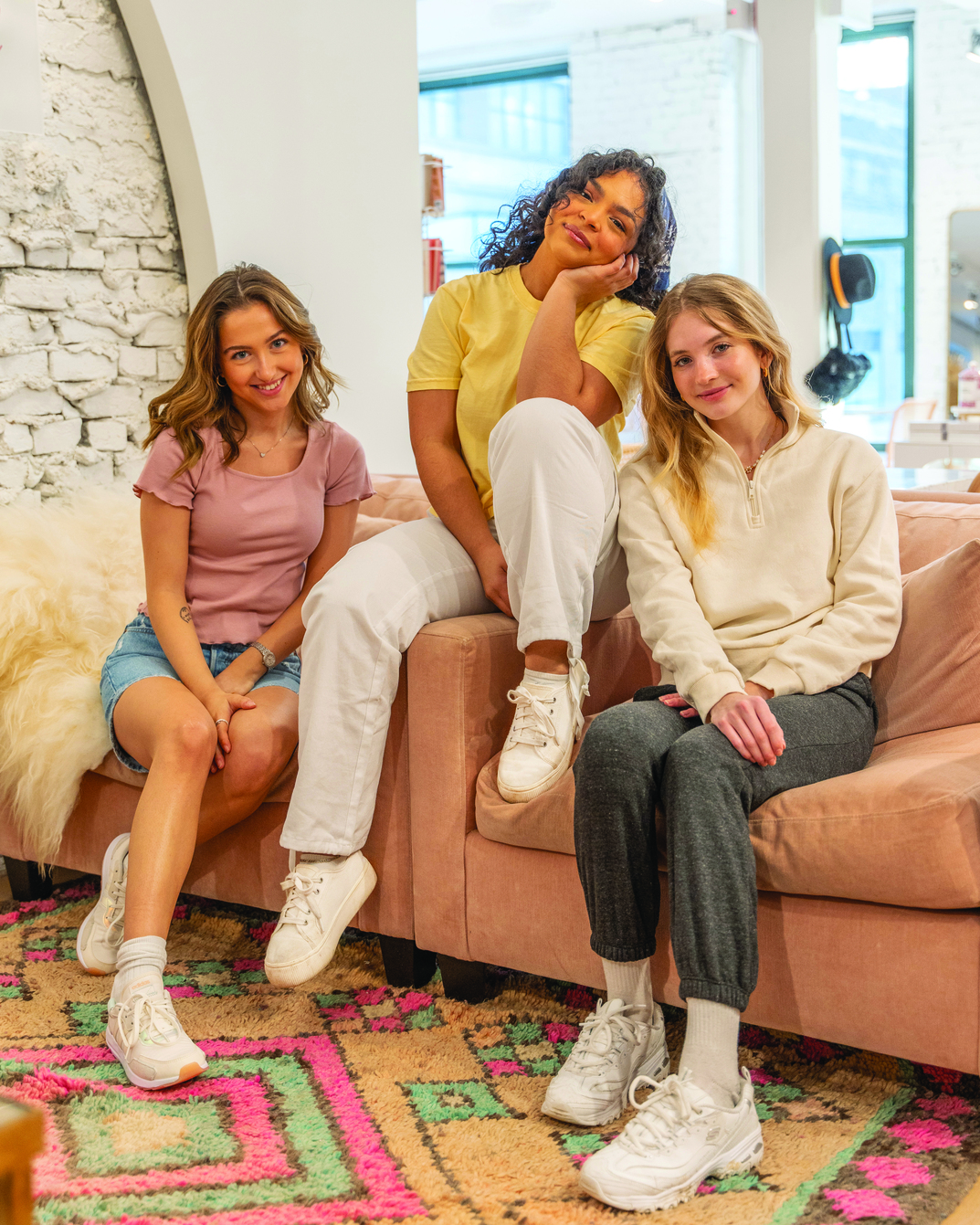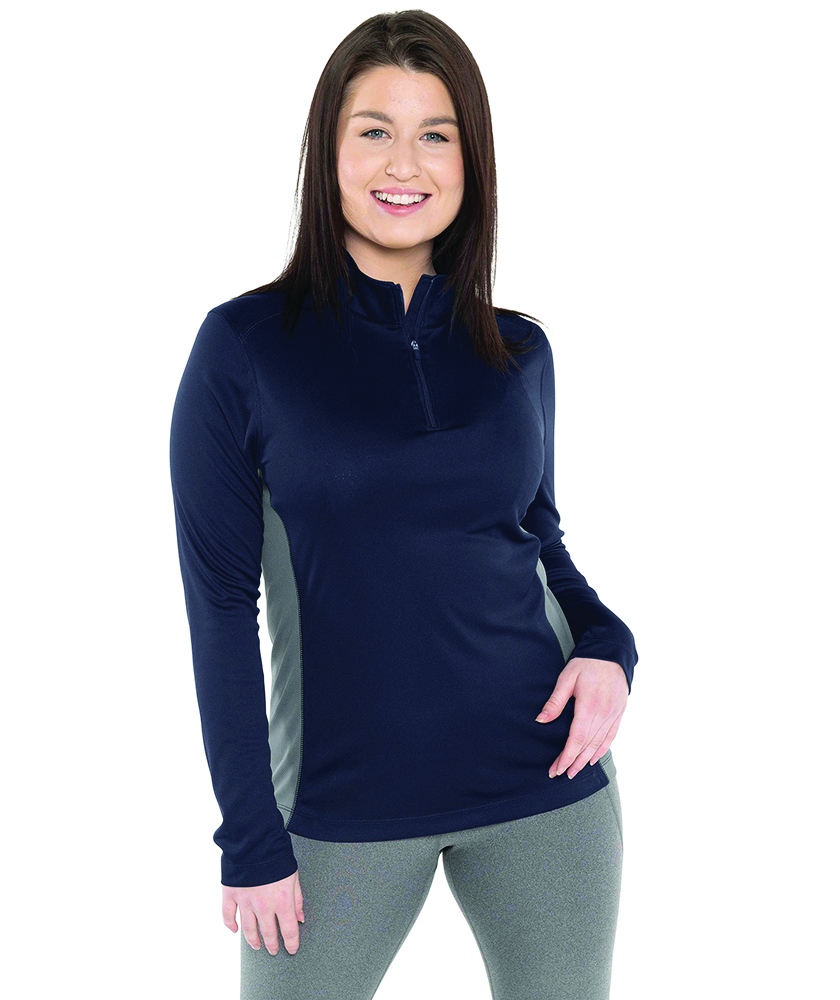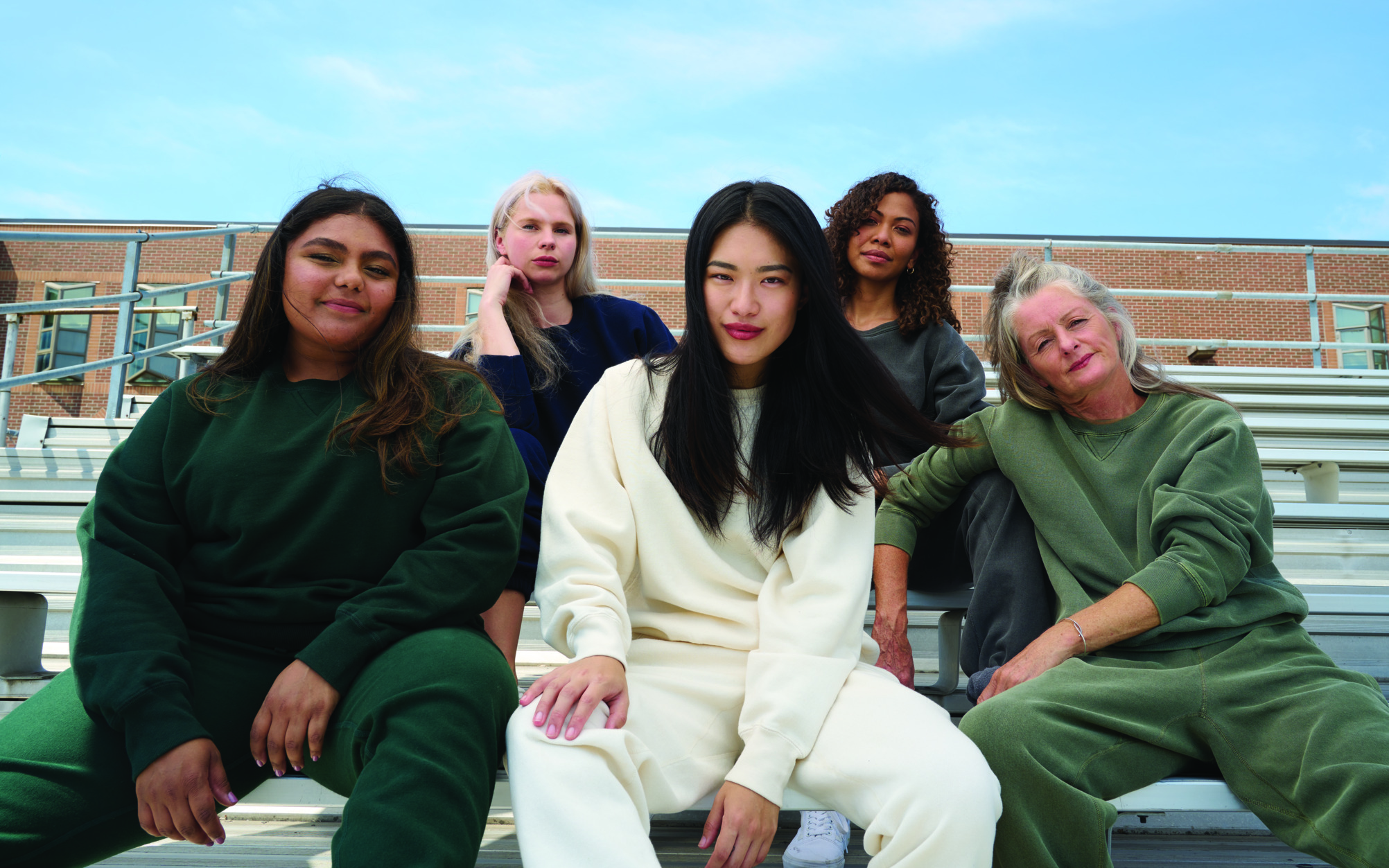Whether a company is looking to outfit its team with a polished, unified look; a festival needs concert merch; or a fitness brand is looking for athleisure to promote its name, there are plenty of use cases where brands or companies need women’s styles. Experts share some of the top trends to keep an eye on, and key features to note for women’s apparel.
5 Trends to Watch in Women’s Apparel
It’s no mistake the lines between wholesale and retail apparel are blending as more mainstream brands and consumer styles enter and impact the wholesale market. While trends have commonly been known to change with the seasons, Christina Marcantelli, business development specialist at Bolingbrook, Illinois-based S&S Activewear, says that is changing. Cropped styles aren’t just for the summer, and layering leads the way.
Diving into some style specifics, sources share the top trends to watch:
Barbiecore: All things pink are on trend right now, says Marcantelli, and it seems like it’s all thanks to the new Barbie movie that came out this summer. Whatever the reason, apparel in vibrant shades of pink works great for businesses in the e-commerce, retail, and lifestyle spaces, according to Marcantelli. She adds that this trend also works well in the travel and leisure industry, especially for party or event planners needing apparel for vacations, festivals, and the like.
Retro: For the younger generations, Y2K fashion has been everywhere in the mainstream. From baby and oversized tees, to track suits and denim — these trends may just be worth exploring for the right market segment. Marcantelli suggests retro items for the streetwear, music, spiritwear, e-commerce, and lifestyle markets. Kathy Cheng, president of Scarborough, Ontario-based Redwood Classics says ʾ90s fashion is in, specifically the iconic Princess Diana biker shorts and oversized crewneck look.
Quiet luxury and minimalism: While the last few years have been all about comfort, Marcantelli says there’s been a surge in wovens. After being relaxed and casual for so long, many are looking to button things back up a bit, whether it’s a tailored button-down, polo, or shacket. These more polished looks paired with a pant or trouser are starting to transcend back into the workplace, Marcantelli says, as people focus on longer-lasting products that stay in their wardrobe for years. To that point, she says neutral, soft palettes are more prevalent in these pieces. Julie Crawley, director of product development for Sharon, Massachusetts-based Charles River Apparel, agrees, noting that “clean lines, neutral colors, and simple silhouettes have been in vogue.”

She adds that minimalist styles allow for versatility, allowing the wearer to mix and match pieces. Cheng also backs the quiet luxury trend, saying people have an appreciation for well-made products, something a bit more tailored, luxurious, and timeless.
Athleisure and matching sets: Pieces that can cross over from the gym to daily life fall into the athleisure category and continue to trend. Hot items in this category include leggings; cropped T-shirts, tanks, pullovers; and even biker shorts. And somewhat of a subset of athleisure is just plain leisurewear, which includes matching sets of all kinds from sweatpants and a hoodie to something sportier. The comfort, functionality, and style aspects of this category keep it on-trend no matter the season. Marcantelli says this category works well for corporate stores, health and wellness, streetwear, spiritwear, e-commerce boutiques, and travel.
Sustainability: “With growing awareness of environmental and social issues, sustainable and ethical fashion has gained popularity,” Crawley says. “Women are seeking clothing made from organic or recycled materials, as well as products that are produced under fair labor conditions.” Sustainable clothing makes sense for corporations or brands that have those Environmental, Social, and Government initiatives in place and want to ensure the promo apparel and other products they choose align with those values. Cheng adds that the quiet luxury trend aligns with Environmental, Social, and Government efforts, focusing on pieces that last longer and are made of quality matters in ethical ways.
End-Use Matters
While promotional products distributors need to stay up on the latest trends to ensure they’re presenting their customers with the items their end-users want, it’s also necessary to consider end-use and functionality. For Crawley, there are four key things that impact product choice: occasion, activity, price, and durability. What’s right for a corporate business client will be different from the performance fabrics and styles required by an athlete or a school program looking for spiritwear.

End-use can also impact the price range and durability of the garment the client is looking for, according to Crawley. “The intended end-use may influence decisions based on the desired lifespan and budget,” she says. “For example, individuals seeking clothing for occasional use, or a specific event might opt for more affordable options, while those seeking long-lasting garments may prioritize durability and be willing to invest in higher-quality items.”
When presenting any apparel item or promotional product, it’s important to have these conversations with the client and ask questions to ensure they get the product line or assortment that best speaks to who the company is and how they want to present themselves, Marcantelli says.
In many cases, brands and companies look for garments that are multifunctional and don’t always opt for the classic company logo on the left-chest. Marcantelli says more people are looking for longevity in garments, something that won’t end up in a landfill, and that might be a piece someone can wear from work to the gym to running errands that doesn’t have the standard company callout on it. She adds that taglines and company initiatives are two alternative branding options that can give a garment more longevity.
Getting the Right Fit
“Proper fit is crucial,” Crawley tells promotional products distributors. And because women’s styles are specifically tailored for body structure, getting sizing right can be a challenge. There’s nothing worse than ordering a jacket or shirt that you really love, but when you put it on, something isn’t quite right. The wearer wants to feel comfortable and confident.

“It enhances their overall experience and satisfaction with the brand, leading to repeat purchases and positive word-of-mouth recommendations,” Crawley says. “Clothing that fits properly reflects positively on the brand’s reputation for quality and attention to detail. It demonstrates that the brand understands its customers’ needs and is committed to providing well-designed, functional, and flattering garments.”
Cheng adds that the promotional apparel space offers a lot of junior sizes, which doesn’t accommodate everyone. If a distributor is working with a corporate client, it’s important they can offer something for every employee.
“There needs to be a wide representation of body shapes,” she says of sizing in the promotional apparel space.
“I think representation really matters, in your marketing, when you’re presenting, when you’re showcasing various people of color in different environments and usages and sizes, it allows the buyers and the users to feel connected to the brand,” Cheng continues. “I mean, ultimately, if you think about corporate branding, isn’t that what it is? It’s an emotional connection.”
To this point, it’s essential for promotional products distributors to not only have a range of women’s apparel and sizes, but also to be educated about it. Distributors can lean on their supplier partnerships for product specifications like sleeve length, chest, waist, and hip size and how the garment lays — all important considerations for well-fitting apparel.



